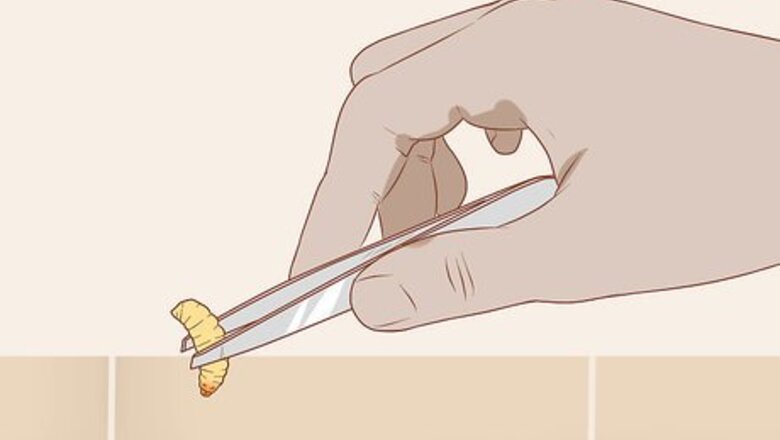
views
Tong Feeding Your Gecko

Grasp the food item in a pair of tongs or tweezers. Tong feeding is a great way to ensure that your gecko can eat, and can also help you keep track of how much it is eating. Start by picking up the food item (such as a live cricket or a waxworm) with a pair of tongs. Make sure to grasp it near one end so that your gecko has plenty to latch onto. You can use regular tweezers if you wish, or purchase a pair of reptile feeding tongs online or from a pet supply store. Most leopard geckos won’t eat dead prey, so try not to squeeze the insect hard enough to kill it.
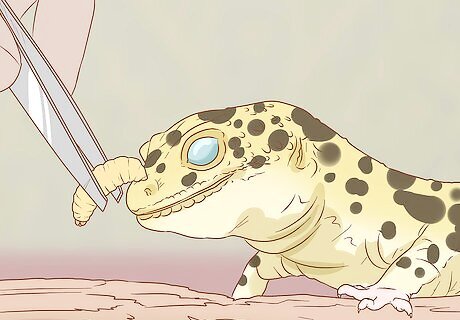
Brush the side of the gecko’s mouth with the food. Let your gecko know the food is there by gently brushing it along one side of the gecko’s mouth. This action will encourage the gecko to open its mouth and take the food. If your gecko can smell what you’re offering, it may open its mouth and try to find the food on its own.
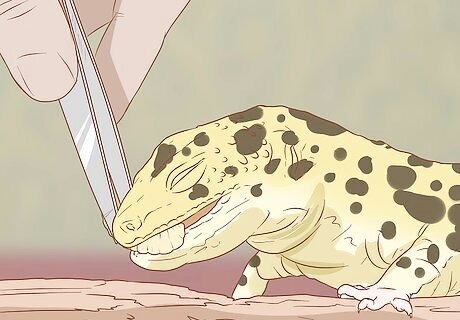
Allow the gecko to eat the food from the tongs. Once your gecko opens up, gently guide the food into its mouth. You don’t have to shove the entire piece of food into the lizard’s mouth—just give your gecko a chance to get a good grip on it, then let go. If your lizard can smell or feel the food, it may be able to latch on with little help from you.
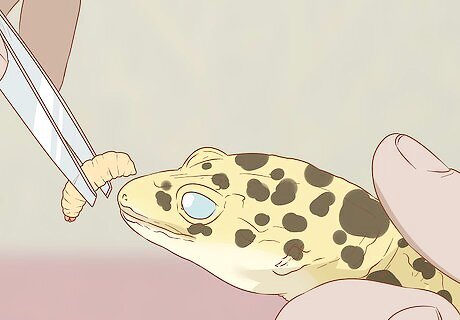
Assist feed your gecko if necessary. If your gecko is refusing to eat, doesn’t like the food you are offering (e.g., insects dusted with vitamin supplements), or needs medication, you may need to do an assist feeding. Pick up the gecko gently in your non-dominant hand and hold on with only enough force to keep it from escaping. Use your dominant hand to grab the feeder insect or other food item with your tongs, then use the pinky finger on that hand to stroke your gecko’s cheek until it opens its mouth. You can then put the food in the gecko’s mouth. Take care not to hold your lizard too high above any surface, since it could be seriously injured if gets away from you and falls. Sit on the floor or hold your gecko just above the surface of a table while you feed it. It may take some persistence, but your gecko should open up if you stroke the side of its mouth long enough. Don’t try to force the food into your gecko’s mouth. Just introduce the food far enough into its mouth that it can get a good grip, then let go. If your gecko is very sick or refuses to eat even with an assist feed, ask your vet how to make a nutritious slurry that you can feed your gecko via syringe.
Giving Your Gecko Proper Nutrition

Offer your gecko a variety of live insect foods. Although leopard geckos can have eye problems for a variety of reasons, one common cause of blindness is poor nutrition. Offer your gecko a variety of live feeder insects to ensure that it gets a range of vitamins and minerals in its diet. To make your gecko’s food extra nutritious, give all feeder insects a rich and varied diet of grains, vegetables, fruits, and high-quality flake fish food before offering them to your gecko. Some good food options for geckos include crickets, cockroaches, mealworms, waxworms, and superworms. You can also offer it a 1-day-old pinky mouse every few feedings as a special treat if your gecko is large enough to swallow it easily.

Feed your gecko a meal of live insects every other day. Most leopard geckos only need to eat every other day. You can offer 2 feeder insects for every 1 inch (2.5 cm) of your gecko’s tail at each feeding. For example, if your gecko's tail is 3 inches (7.6 cm) long, you can feed it 6 feeder insects per meal. If your gecko goes for a week without eating, call your vet. They may be able to help you determine the underlying reason for your gecko’s low appetite and determine whether it might benefit from assist feeding or a slurry diet.
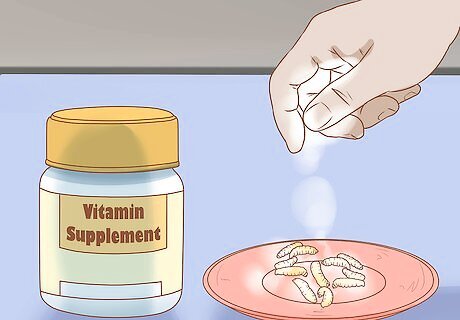
Give your gecko a vitamin supplement rich in vitamin A. Vitamin A deficiency is a common problem in leopard geckos, and it can lead to blindness and a variety of other health problems. Every 10-14 days, dust your feeder insects with a calcium and vitamin supplement that contains vitamin A before feeding them to your geckos. Leopard geckos need a calcium and multivitamin supplement, because in captivity they are not getting their normal variety of foods that they would be getting in the wild. Ask your vet to recommend a vitamin supplement that is right for your gecko’s needs. If your gecko already has a vitamin A deficiency, it may need additional supplementation.
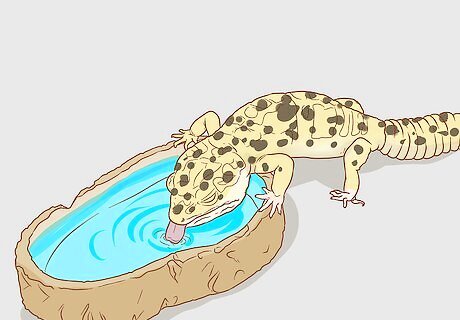
Make sure your gecko is properly hydrated. Geckos that aren’t properly hydrated sometimes have difficulty shedding the skin over their eyes, leading to blindness. Make sure your gecko always has access to a shallow dish of fresh water where it can drink or soak if it wants to. The water dish should be large enough so that the gecko can fit its whole body inside, but shallow enough that it can climb in and out easily. Put the dish of water on the cooler side of the cage. You can also help keep your gecko hydrated by offering it a humidity hide box. You can purchase a hide box at a pet supply store or order one online.




















Comments
0 comment